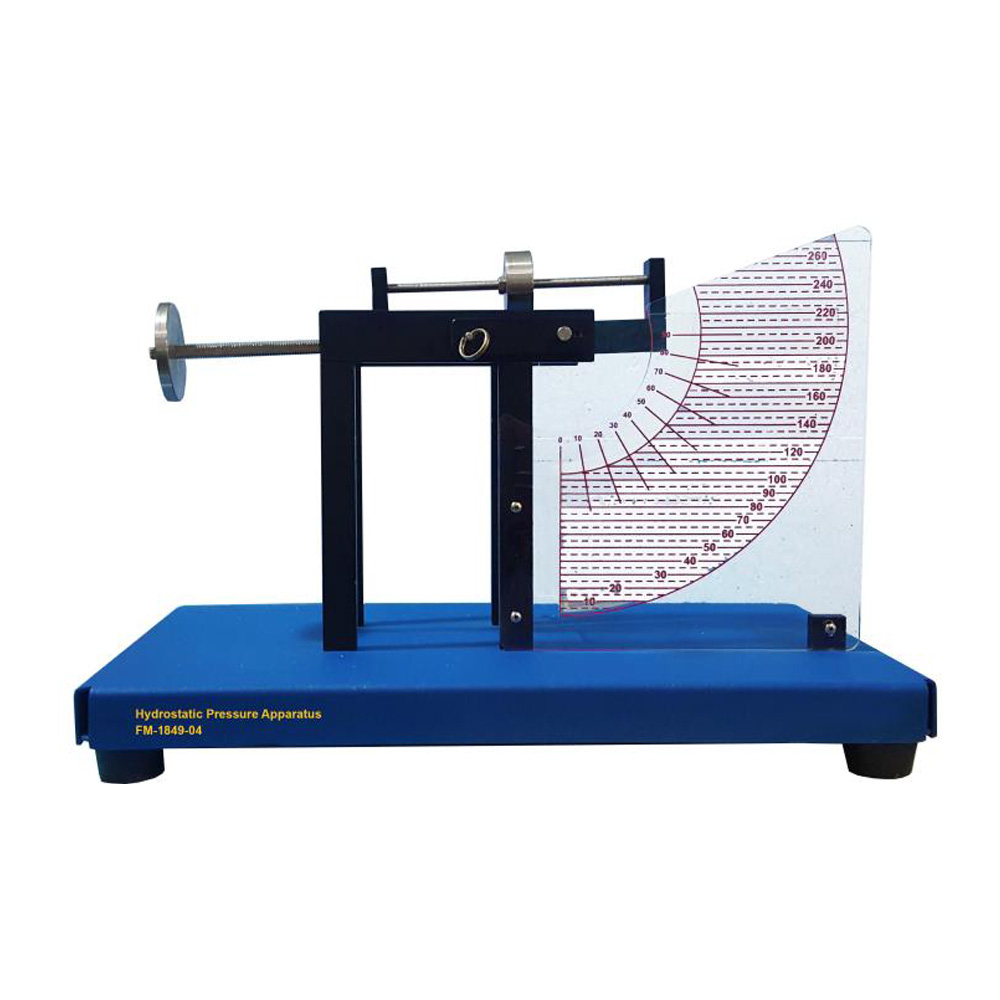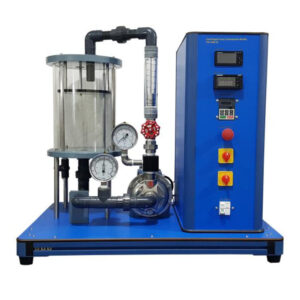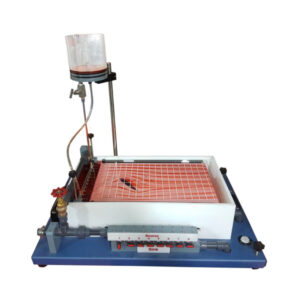This product allows students to measure the moment due to the fluid (hydrostatic) thrust on a fully or partially submerged plane. The plane works in either a vertical or inclined (angled) position. Students then compare their measurements with theoretical analysis.
The equipment consists of a vertical panel that holds a clear plastic quadrant, to which students add water. The quadrant has lines to help students keep the plane in a vertical or angled position.
The cylindrical sides of the quadrant have their central axis coincidental with the moment measurement axis. The total fluid pressures on these curved surfaces, therefore, exert no moment about this pivot. Therefore, the moment is only due to the fluid pressure on the plane test surface.
Students measure this moment using weights suspended from a lever arm. A scale on the panel of the apparatus shows the head of water. To perform experiments, students level the apparatus using its leveling feet and spirit (bubble) level. They decide whether to test either a vertical or inclined plane. They then initially balance the quadrant tank using balancing weight at the top. They take results by balancing sliding weight with known quantities of water. They then use the results to calculate the equivalent moment of force (M) or hydrostatic thrust. Students note the relationship between the moment and the water height (h). The equipment can use non-toxic water dye (not included) to help students see the water levels more clearly. Supplied with a comprehensive user guide




